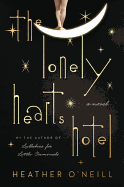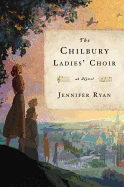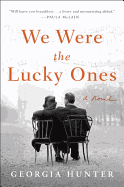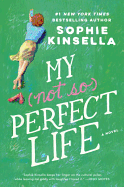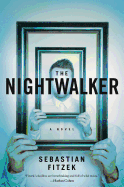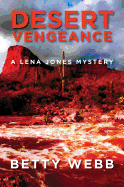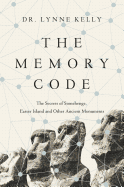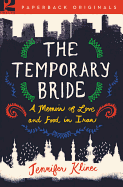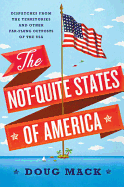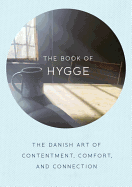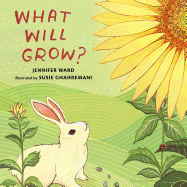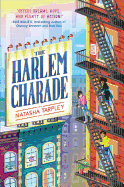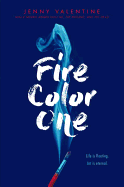Following in Le Guin's Footsteps: Female Fantasy Writers
"We like to think we live in daylight, but half the world is always dark, and fantasy, like poetry, speaks the language of the night." Ursula K. Le Guin's definition of fantasy literature speaks to the genre's power to captivate and illuminate all at once. These female writers are following in Le Guin's footsteps, crafting exquisite, complex, brilliant tales that challenge the imagination and ask big questions about life.
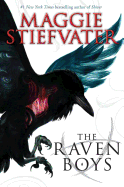 In Maggie Stiefvater's Raven Cycle series (beginning with The Raven Boys), Blue Sargent is raised in a house of psychics. When Blue falls in with a trio of boys from the local private school, she finds herself drawn into a search for the grave of an ancient king along a subterranean line of power that runs through a spiritual forest. It sounds complicated because it is--and that complication is a delight to unpack over the course of four books that explore the mysteries of magical powers alongside the difficulties of being a teenager.
In Maggie Stiefvater's Raven Cycle series (beginning with The Raven Boys), Blue Sargent is raised in a house of psychics. When Blue falls in with a trio of boys from the local private school, she finds herself drawn into a search for the grave of an ancient king along a subterranean line of power that runs through a spiritual forest. It sounds complicated because it is--and that complication is a delight to unpack over the course of four books that explore the mysteries of magical powers alongside the difficulties of being a teenager.
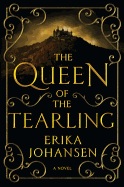 Erika Johansen's Tearling trilogy (starting with Queen of the Tearling) features a strong (if flawed) female protagonist in Kelsea Glynn, named Queen of the Tearling at age 19. Though Johansen's series may be at times too epic, tackling everything from learning to own one's magical powers to the bravery it takes to stand up to unjust laws, the trilogy overall stands as an example of finely woven magic, mystery and political intrigue.
Erika Johansen's Tearling trilogy (starting with Queen of the Tearling) features a strong (if flawed) female protagonist in Kelsea Glynn, named Queen of the Tearling at age 19. Though Johansen's series may be at times too epic, tackling everything from learning to own one's magical powers to the bravery it takes to stand up to unjust laws, the trilogy overall stands as an example of finely woven magic, mystery and political intrigue.
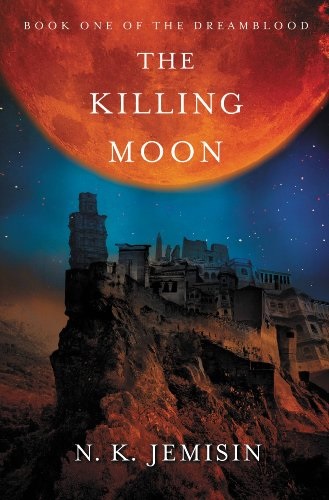 N.K. Jemisin's The Killing Moon (and its sequel, The Shadowed Sun) take readers to an imagined desert-like land called Gujaareh in which priests harvest dreams and lead citizens to their gentle deaths. Jemisin's epic stories (like those in the Inheritance trilogy) question life, death, religion, violence and government and how they all interact--a testament to the power of otherworldly stories to shine a light on our own crazy, mixed-up world. --Kerry McHugh, blogger at Entomology of a Bookworm
N.K. Jemisin's The Killing Moon (and its sequel, The Shadowed Sun) take readers to an imagined desert-like land called Gujaareh in which priests harvest dreams and lead citizens to their gentle deaths. Jemisin's epic stories (like those in the Inheritance trilogy) question life, death, religion, violence and government and how they all interact--a testament to the power of otherworldly stories to shine a light on our own crazy, mixed-up world. --Kerry McHugh, blogger at Entomology of a Bookworm
Following in Le Guin's Footsteps: Female Fantasy Writers
On the Eve of the Oscars, Novels About Hollywood
In anticipation of Sunday's Oscars ceremony, author Tim Walker chose his "top 10 Hollywood novels" for the Guardian.
---
"Science fiction is one of the greatest predictors of the future," and Quirk Books "thought it would be fun to take a look at some... sci-fi tech feats that haven't happened yet... but could!"
---
"Medieval shelfies": The British Library's publishing team (@bl_publishing) "encouraged followers to send in their shelfies.... However, the appreciation of the aesthetic value of books and bookcases is not just a modern day phenomenon."
---
"You could be 'writer in residence' for the Mall of America," the Star Tribune reported.
---
"Illuminated book sculptures form highly detailed magical worlds," My Modern Met noted.
On the Eve of the Oscars, Novels About Hollywood
Rediscover: The Dispossessed
Last year, the New York Times described Ursula K. Le Guin as "America's greatest living science fiction writer," though Le Guin said she would prefer to be called an "American novelist." Her fantasy and science-fiction works transcend the boundaries of genre, exploring sociological, anthropological, environmental and spiritual themes in the guise of spaceships and magic. Le Guin is perhaps best known for Earthsea, a fantasy series set on an archipelago world, and the Hainish Cycle, a loosely related collection of novels and short stories set in the same science-fiction universe. The Hainish Cycle imagines a range of planets colonized long ago by humans from Hain, who are just recently reconnecting with these scattered and radically diverged worlds.
The Dispossessed (1974), the fifth Hainish novel, takes place on a pair of twin worlds in Tau Ceti. Shevek, a physicist on the anarchist world of Anarres, travels to Urras, from which the anarchist Odonians fled several generations prior. The book is split into two connected narratives: the first chronicling Shevek's trip to the lush but authoritarian world of Urras; the second Shevek's upbringing on arid, anarchist Anarres, and what drove this brilliant scientist to abandon his homeworld. Le Guin's construction of a pacifist-anarchist society is a testament to her anthropological upbringing (her father was a famous anthropologist) and literary genius. The Dispossessed illuminates human behavior and social structures through the lens of the fantastic, as only the best sci-fi can. It was last published as a Harper Perennial Modern Classic in 2014 (9780060512750). --Tobias Mutter
Rediscover: The Dispossessed
Book Review
Fiction
The Lonely Hearts Hotel
by Heather O'Neill
Heather O'Neill (Daydreams of Angels) weaves a magical story of two talented orphans who live outside convention and survive the Great Depression in the author's native Montreal.
In 1910, two infants are in the grim care of strict nuns at a Catholic orphanage. The first, a boy, barely survived his birth. The second, a girl, was found freezing in the snow by a factory worker. The nuns nickname the boy Pierrot after the sad clown of the Commedia dell'Arte, and the girl Rose, for the pink spots that appeared in her cheeks after she thawed. Pierrot and Rose are drawn to one another from their earliest days, but the nuns mercilessly keep them separated, determined to squelch any possibility of future romance between the two. However, their talents for music, comedy and acrobatics make them a natural double act, and by their teen years, the Mother Superior is grudgingly allowing them to perform in rich homes to help support the orphanage. As feared, the two fall deeply in love, but when a wealthy man adopts Pierrot, Sister Eloise causes a misunderstanding that breaks up the blossoming romance.
Rightfully compared with Erin Morgenstern's The Night Circus for its eccentricities, thwarted love affair and whimsical imaginings of a circus-like revue, O'Neill's fairy tale spins a bittersweet spell. Her acrobatic prose sweetens the experience, liberally dusted with confections of phrase such as "the leaves were like poems that had fallen to the ground." Brazen, offbeat and thoroughly bewitching, The Lonely Hearts Hotel mixes the sacred and profane into an effervescent love potion. --Jaclyn Fulwood, blogger at Infinite Reads
Discover: Two orphans, each graced with vaudevillian talents, come of age in Depression-era Montreal.
Riverhead Books,
$27,
hardcover, 400p., 9780735213739
The Chilbury Ladies' Choir
by Jennifer Ryan
Jennifer Ryan's first novel, The Chilbury Ladies' Choir, takes on a range of the human experience through the lives and voices of the women of the village of Chilbury, in the south of England, at the beginning of World War II.
Mrs. Tilling is a timid, good-hearted, churchgoing lady, a widow whose only son is about to be sent to France to fight. In her journal, she documents how the funeral for young Commander Edmund Winthrop is to be the last appearance of the village choir, as, according to the Vicar, "all our male voices have gone to war." In addition to Mrs. Tilling, the reader is introduced to Miss Edwina Paltry, the town's sly midwife; Kitty Winthrop, the 13-year-old sister to the lost Commander; and her older sister, Venetia, a wildly boy-crazy 18-year-old.
When a new music teacher arrives from London, she doesn't see why a choir needs male voices, and promptly calls practices again. The Chilbury Ladies' Choir meets some resistance, some grumblings about tradition, but as the war proceeds, the women learn to lean on one another. Eventually the choir becomes a central institution in the town, providing material as well as moral support, and a theatre for personal growth.
The Chilbury Ladies' Choir offers a world of emotions, experiences and characters in a tiny village, over a few months in 1940. Through variously sweet, mischievous, aggrieved and hopeful letters and journals, these ladies bring home the impact of war in an inspirational, sometimes sad, novel that Jennifer Ryan crafts with style. --Julia Jenkins, librarian and blogger at pagesofjulia
Discover: A village deprived of its men proves that women can pull together and do anything that needs doing.
Crown,
$26,
hardcover, 384p., 9781101906750
We Were the Lucky Ones
by Georgia Hunter
Set in World War II, Georgia Hunter's debut novel, We Were the Lucky Ones, is based on actual events in her family. At 15, Hunter discovered her family had once lived in Radom, Poland, and had been persecuted for being Jews.
In early 1939, young Addy Kurc is living in Paris, enjoying the music and food of the city on his days off from work as an engineer. Although he's far from his family in Poland, he knows he'll return to share Passover with his parents and siblings. Then a letter arrives from his beloved mother, begging him to stay where he is, not to attempt to cross German borders because it's dangerous to do so. He realizes his mother is not telling him everything and that he's missed or ignored clues that indicate unrest and hostility toward Jews. It will be many years before Addy sees his mother again.
Meanwhile, his sisters, brothers and parents are facing their own dangerous situations. On September 1, 1939, Hitler invades Poland and begins his systematic annihilation of the Jewish population of Europe. Within weeks, the Red Army takes over the eastern part of Poland. Forced into ghettos or shipped off to Siberia, family members struggle to get through one more day under the harshest of conditions.
Hunter does an excellent job of bringing history to life, with just enough gruesome details of what happened during the Holocaust while conveying the desires and hopes of the Kurcs as they fell in love, got married and had children during this horrific period. --Lee E. Cart, freelance writer and book reviewer
Discover: This story of one family's incredible ability to stay alive during the Holocaust is based on true events.
Viking,
$27,
hardcover, 416p., 9780399563089
My (Not So) Perfect Life
by Sophie Kinsella
Katie Brenner is living her dream London life: working at a hip branding agency, exploring vibrant neighborhoods, relishing city living. Or that's what she keeps telling herself. In reality, her job involves lots of boring admin work, her flatmates are not only odd but also irritating, and her commute is a non-Instagrammable slog. Not to mention her posh boss, Demeter Farlowe, seems to embody the perfectly constructed existence Katie craves.
When Katie is laid off, she heads home to Somerset to help her dad and stepmother launch a glamping business, pouring her frustrated creative energy into designing a sleek website and making sure every detail is perfect. To her surprise, the Ansters Farm holiday experience is a roaring success--until Demeter shows up with her family in tow. Hilarity ensues as Katie tries to avoid coming face to face with her former boss. But as Katie begins to suspect that Demeter's reality might not entirely match her flawless facade, she is forced to question her long-held beliefs about what constitutes a meaningful life.
Kinsella (the Shopaholic series; Finding Audrey) expertly skewers the assumptions surrounding social media, the absurdities of office politics and the ironies of wealthy Londoners shelling out cash for a luxury camping experience. But her breezy narrative, told in Katie's voice, offers deeper insights about the pressures of family expectations and forging one's own path. There's a love story, but it's less important than Katie's struggle to build a life she loves--even if it wouldn't play well on Instagram. --Katie Noah Gibson, blogger at Cakes, Tea and Dreams
Discover: A breezy, insightful novel of a young woman struggling to "make it" in London and build a meaningful life.
Dial Press,
$28,
hardcover, 448p., 9780812998269
Mystery & Thriller
The Nightwalker
by Sebastian Fitzek, trans. by Jaime Lee Searle
In childhood, Leon Nader suffered a series of strange sleep disturbances, far beyond sleepwalking. Following the death of his parents, one such instance was so violent that his foster family kicked him out. After years of therapy, he finally got his sleep habits under control, though as an adult he still suffers from occasional haunting dreams and sleep paralysis. Or at least he thinks so, until he wakes one day to find his wife sobbing on the floor, packing a suitcase. Bewildered by her battered appearance, he tries to understand what's happened, but she doesn't explain before she runs away. Despite his doctor's assurances that he'd been cured, Leon realizes that his parasomnia has returned and, with it, his violent behaviors. Determined to figure out what's going on, he contacts his childhood therapist who assures him he never actually hurt anyone in his sleep. But Leon doesn't trust this. He buys a motion-activated camera to wear at night. What it reveals is terrifying.
Sebastian Fitzek begins The Nightwalker with a suggestion that it takes place close to readers, possibly in their own neighborhood, establishing an intimacy that carries onward. Leon becomes a familiar person, a man anyone might encounter, which makes his descent all the more horrifying. Every time he wakes, he discovers more amiss in his life; his memories and reality do not align. The narrator leads readers through these unexpected discoveries, each one contributing an increasing sense of wrongness. And just as readers realize the broadening scope of the story, the author delivers one final chilling twist. --Justus Joseph, bookseller at Elliott Bay Book Company, Seattle, Wash.
Discover: In this thrilling horror story, a man struggles to understand the destructive acts he's committing while asleep.
Pegasus,
$25.95,
hardcover, 416p., 9781681773278
Desert Vengeance
by Betty Webb
That an abused foster child with a horrific past becomes a smart, fearless private investigator typifies the spunk and mysterious charm of the Lena Jones mystery series by Betty Webb (Desert Noir).
In the latest entry, Desert Vengeance, the indefatigable Jones is impelled to investigate the grisly murder of the man--just released from prison--who abused her when she was nine, as well as the murder of his enabling wife. The case is complicated not only by the moral ambivalence of the crime--Jones had hatched her own revenge plot before someone else acted--but also by the sheer number of victims traumatized by the same man. Because so many had a motive and the means to commit murder, Jones must navigate a tangled web of past wrongs and pursue her own instincts toward some hazy dawning of justice.
Webb's pithy first-person narration cuts to the chase without a lot of filler, making Desert Vengeance a pleasure to read. Though lean and mean, the prose carries enough quirk and nuance to convey the protagonist's distinct, cheeky voice. Lena Jones is tough yet vulnerable, irreverent and sarcastic, yet dead serious at times. She's the flawed hero one can't help but love. Webb depicts her evenhandedly in terms of balanced characterization, and in relating her to the setting. The Arizona desert and its touristy towns offer up a strange bonanza of desert tropes, and Webb mines them with enough restraint to strengthen, rather than overshoot, her themes of loss and retribution. --Scott Neuffer, freelance journalist and fiction author.
Discover: Desert Vengeance is a wry entry in a mystery series set in the American Southwest.
Poisoned Pen Press,
$26.95,
hardcover, 284p., 9781464205934
Social Science
The Memory Code: The Secrets of Stonehenge, Easter Island and Other Ancient Monuments
by Lynne Kelly
The standing boulders at Stonehenge, the giant head sculptures on Easter Island, the Nazca lines drawn in the Peruvian desert and many other monuments left behind by ancient cultures have intrigued researchers for centuries. In The Memory Code, science writer Lynne Kelly gives readers a new and plausible reason for their existence.
Created by people who had no written language, these sites, Kelly proposes, were used as memory aids to help cultures remember the information they needed for survival, like landscape details that would lead them to food and water, and the healing properties of plants. They were also used to record traditions, myths and ceremonies. Kelly's idea is not farfetched when one considers how indigenous Australians still use songlines to keep track of pathways; Africans have lukasa, or memory boards, covered in beads that represent multiple levels of information; and Native Americans keep records using birchbark scrolls covered with intricate designs.
Kelly not only analyzes a variety of techniques used by indigenous people, but also implements the ideas in her own life. Using her own memory boards, carved sticks and walking routes, she's memorized vast details in geological history, a field guide of state birds, the lineage of royalty in Europe and China, and an array of other details. Readers can readily implement her ideas and train themselves to use these mnemonic devices just as the ancient ones may have done so long ago. --Lee E. Cart, freelance writer and book reviewer
Discover: The author outlines methods for remembering details that rely on those that may have been used by ancient cultures in their oral traditions.
Pegasus,
$27.95,
hardcover, 336p., 9781681773254
Travel Literature
The Temporary Bride: A Memoir of Love and Food in Iran
by Jennifer Klinec
Jennifer Klinec, founder of a London cooking school, has traveled all her life in search of new places, people and food. In The Temporary Bride: A Memoir of Love and Food in Iran, she goes to the Middle East in search of a cuisine that has been preserved throughout generations and is often kept behind closed doors. In the city of Yazd, she encounters Vahid, whose mother spends a few weeks teaching Klinec in their kitchen. Vahid shows the chef around the city, the two venturing out carefully in public with one initial goal: to eat.
Klinec's fearless palate is a fascinating way to experience Iran, and her skill for writing about food is phenomenal. As Klinec and Vahid develop a closer relationship, the later parts of the memoir become perhaps too focused on securing a temporary marriage license that would allow the couple to be seen together. Klinec's disarming candor about contradictions encountered during their courtship--wildly changing feelings, for example, or unexpected and incongruous aspects of the other person--is notable because she could have smoothed difficulties of conflicting backgrounds and expectations to serve the narrative.
The Temporary Bride takes the reader on a journey into a beautiful, complicated culture, encouraging a departure from the beaten path in search of pleasurable food, broader experience and the surprising relationships that inevitably develop while sharing a meal. --Richael Best, bookseller, Elliott Bay Book Company, Seattle, Wash.
Discover: A quest for Iranian cuisine leads to culinary delights and unexpected romance in this vivid memoir.
Twelve,
$15.99,
paperback, 240p., 9781455537693
The Not-Quite States of America: Dispatches from the Territories and Other Far-Flung Outposts of the USA
by Doug Mack
What exactly is a U.S. territory? Do residents of the territories have the same rights and privileges as those who live in the 50 states? Should the U.S. even have territories if it calls itself a democracy? Stumped by these and other questions, travel writer Doug Mack (Europe on Five Wrong Turns a Day) hops on a plane (eventually several) to delve into the convoluted histories and uncertain futures of the U.S. Virgin Islands, American Samoa, Guam, the Northern Mariana Islands and Puerto Rico. Mack recounts his adventures, sharing stories of the people he meets and pondering the big questions of what it means to be an American, in his second book, The Not-Quite States of America.
Mack begins his quest with a visit to the Virgin Islands. He meets longtime residents and newcomers from the continental U.S., members of groups agitating for statehood and those mostly satisfied with the status quo--which is slightly different for each territory. He explains the complex and often conflicting histories of the territories, discussing U.S. imperialism (past and present), the concept of Manifest Destiny and the influence of other cultures (Japanese, Polynesian, Latin American) on the cultural identity and day-to-day life of each place. At every stage, he encounters paradoxes and contradictions, which are summed up in one phrase that applies to all the territories: "a tricky, burdensome dual identity."
Witty and thoughtful, with plenty of vibrant characters and vivid descriptions, The Not-Quite States of America is also a well-researched history and a highly enjoyable travelogue. Frequent fliers and armchair travelers alike will relish Mack's account and wonder where he's headed next. --Katie Noah Gibson, blogger at Cakes, Tea and Dreams
Discover: This entertaining and well-researched travelogue of U.S. territories explores what it means to be American.
W.W. Norton,
$26.95,
hardcover, 336p., 9780393247602
House & Home
The Book of Hygge: The Danish Art of Contentment, Comfort, and Connection
by Louisa Thomsen Brits
The trendy Danish concept of hygge is the subject of Louisa Thomsen Brits's first book. Half Danish and half British, Brits was born in Uganda and spent her childhood summers in Denmark. With her simultaneous insider and outsider perspectives on Danish culture, she translates this aspect of it for the rest of the world with skill and subtlety. The Book of Hygge is likely to be one of the best guides to creating a more socially connected and rewarding life.
Hygge is a temporary escape from the conflicts of daily life, a form of mindfulness focused on the enjoyment of human community and familiar pleasures rather than material consumption. It means feeling "warm, safe, comforted, and sheltered... with people and places that [anchor] and [affirm] us... a sense of abundance and contentment... being, not having." The possession of basic comforts is necessary for hygge, but no more. It also involves an ideal of egalitarian social life without conflict, debate or self-indulgence. It "isn't the complete absence of the usual demands of a fully engaged human life, but it is facilitated by a willingness to put down our problems and abandon our cares for a while."
This is a pretty book, illustrated with photos of candles, natural environments, stones, baths, drinks and soft textiles, and salted with quotations and proverbs. It is soothing to look at, but it also offers a genuine challenge to develop oases of tolerance and peace at home and in the workplace, to balance the alienation, overstimulation and anxious striving of everyday life. --Sara Catterall
Discover: In this attractive, inspiring guide, a Danish-British writer explains the philosophy and methods behind the increasingly popular Danish concept of hygge.
Plume,
$22,
hardcover, 192p., 9780735214095
Children's & Young Adult
What Will Grow?
by Jennifer Ward, illus. by Susie Ghahremani
"Shiny, brown./ Bumpy crown./ What will grow?/ Oak tree."
"Fluffy, white./ Taking flight./ What will grow?/ Dandelions."
What Will Grow? is a joyful, rhyming picture book about the miraculous nature of seeds from the creative team behind What Will Hatch?: Jennifer Ward (Feathers and Hair: What Animals Wear; Mama Built a Little Nest) and illustrator Susie Ghahremani. Each seed-rooted riddle is illustrated by a lovely, lush and leafy gouache-on-wood, double-page spread featuring some curious, usually hungry, animal--be it deer, squirrel or rabbit--and always, always a ladybug hiding in some corner for a wee reader to spot. In one spread ("Very tiny. Then so viny!"), a fox bites into a tomato, ripe on the vine, sprouted from pale and tiny seeds, also pictured. In another, a yellow bird clamps a sunflower seed in its beak ("Stripy black./ Crunchy snack."). What will grow? A towering, beautiful sunflower, so tall that readers have to open up the vertical gatefold to reveal its full glory. The rabbit-inhabited carrot spread is also particularly masterful, as the gatefold opens down to show the "Flowery fruit/ Orange root" carrots growing underground. And, oh, that serene and gorgeous transformation from pinecone to pine tree!
The inviting pages crescendo to a double-page, rainbow-arched garden at the end, and a planting how-to and a "seed to plant" illustration further illuminate the cyclical nature of seeds, plants and flowers. Don't let its deceptively humble subject fool you; this is a mighty oak of a book. --Karin Snelson, children's & YA editor, Shelf Awareness
Discover: This lyrical picture book about the wonders of seeds will charm readers with its fun gatefolds and softly appealing illustrations of animals and plants.
Bloomsbury,
$16.99,
hardcover, 40p., ages 3-6, 9781681190303
The Harlem Charade
by Natasha Tarpley
Twelve-year-old Jin Yi records "interesting moments and details" in her memory notebook while watching customers shop in her Korean-American family's Harlem bodega: "[P]eople will tell you their stories in the way that they move, how their faces look, how they speak." Observing turns to action when a girl Jin recognizes from history class leaves a subway fare card taped to a pickle jar with a Post-It note, Enjoy 1 Free Ride. Intrigued, Jin pursues the girl, Alex, and discovers that she's been leaving free MetroCards across the city. When Jin confronts Alex at school the next day, she grudgingly allows Jin to join her next do-good outing. The two girls stop a would-be thief who turns out to be a hungry boy who's been living in a subway station ever since finding his unconscious grandfather in a local park. Elvin, also 12, needs to figure out who attacked his grandfather--and Jin and Alex become his unlikely allies. The trio's quest to solve a crime points to a mystery almost half a century old that involves missing paintings, multiple generations and a much-needed resurgence of community activism.
Natasha Tarpley (I Love My Hair!) makes her middle-grade debut with a multi-layered, multi-cultural whodunit that emphasizes art as a powerful force for change while illuminating later 20th-century Harlem cultural history beyond the better-known Harlem Renaissance. (Helpful notes about "real events and locations" appear at book's end.) Readers will discover a nimbly plotted, inclusively populated adventure, all the while enjoying the adrenaline rush of solving this Harlem Charade. --Terry Hong, Smithsonian BookDragon
Discover: Three intrepid seventh graders from Harlem work together to solve a decades-old mystery in the art world--and manage to save their neighborhood, as well.
Scholastic,
$16.99,
hardcover, 320p., ages 8-12, 9780545783873
Fire Color One
by Jenny Valentine
Sixteen-year-old Iris is obsessed with fire. And art. "I find it near impossible to look anywhere else when there's a fire burning.... I think about the dancing, shifting, elusive character of a fire, of the colors it paints, unlike any other colors I will ever find, in a whole lifetime of looking." After being caught lighting one too many fires at home and in school, and with her family's household debt mounting, Iris is dragged from Los Angeles to the English countryside by her mother, Hannah, who is a self-centered money-grubber, and her stepfather, Lowell, "aging pinup boy, one-time TV star, and current no-hoper." Hannah and Lowell are in pursuit of an inheritance from Iris's "sick old stranger of a father," who happens to be a millionaire art collector.
Forced to spend her father's last dying days with him, Iris discovers something that staggers her: that she could be "loved so much and by someone my mother only taught me to hate." Disgusted by her mother's grasping materialism--"It's nuts when you think about it, how easily we lose our minds over stuff, how quickly money eats up the world, just like fire"--Iris ponders a way to dodge her mother's unsavory scheme and maybe even get some satisfying revenge while she's at it. British author Jenny Valentine's (Me, the Missing, and the Dead) beautifully written YA novel Fire Color One was a Carnegie Medal finalist. Iris is a grumpy, complex and likable protagonist, with depth and a dark humor, and her hopeful story of redemption will leave readers cheering her on. --Emilie Coulter, freelance writer and editor
Discover: In Jenny Valentine's British YA novel, a Carnegie Medal finalist, a teenage pyromaniac finds her long-lost father.
Philomel,
$17.99,
hardcover, 240p., ages 12-up, 9780399546921
 In Maggie Stiefvater's Raven Cycle series (beginning with The Raven Boys), Blue Sargent is raised in a house of psychics. When Blue falls in with a trio of boys from the local private school, she finds herself drawn into a search for the grave of an ancient king along a subterranean line of power that runs through a spiritual forest. It sounds complicated because it is--and that complication is a delight to unpack over the course of four books that explore the mysteries of magical powers alongside the difficulties of being a teenager.
In Maggie Stiefvater's Raven Cycle series (beginning with The Raven Boys), Blue Sargent is raised in a house of psychics. When Blue falls in with a trio of boys from the local private school, she finds herself drawn into a search for the grave of an ancient king along a subterranean line of power that runs through a spiritual forest. It sounds complicated because it is--and that complication is a delight to unpack over the course of four books that explore the mysteries of magical powers alongside the difficulties of being a teenager. Erika Johansen's Tearling trilogy (starting with Queen of the Tearling) features a strong (if flawed) female protagonist in Kelsea Glynn, named Queen of the Tearling at age 19. Though Johansen's series may be at times too epic, tackling everything from learning to own one's magical powers to the bravery it takes to stand up to unjust laws, the trilogy overall stands as an example of finely woven magic, mystery and political intrigue.
Erika Johansen's Tearling trilogy (starting with Queen of the Tearling) features a strong (if flawed) female protagonist in Kelsea Glynn, named Queen of the Tearling at age 19. Though Johansen's series may be at times too epic, tackling everything from learning to own one's magical powers to the bravery it takes to stand up to unjust laws, the trilogy overall stands as an example of finely woven magic, mystery and political intrigue. N.K. Jemisin's The Killing Moon (and its sequel, The Shadowed Sun) take readers to an imagined desert-like land called Gujaareh in which priests harvest dreams and lead citizens to their gentle deaths. Jemisin's epic stories (like those in the Inheritance trilogy) question life, death, religion, violence and government and how they all interact--a testament to the power of otherworldly stories to shine a light on our own crazy, mixed-up world. --Kerry McHugh, blogger at Entomology of a Bookworm
N.K. Jemisin's The Killing Moon (and its sequel, The Shadowed Sun) take readers to an imagined desert-like land called Gujaareh in which priests harvest dreams and lead citizens to their gentle deaths. Jemisin's epic stories (like those in the Inheritance trilogy) question life, death, religion, violence and government and how they all interact--a testament to the power of otherworldly stories to shine a light on our own crazy, mixed-up world. --Kerry McHugh, blogger at Entomology of a Bookworm



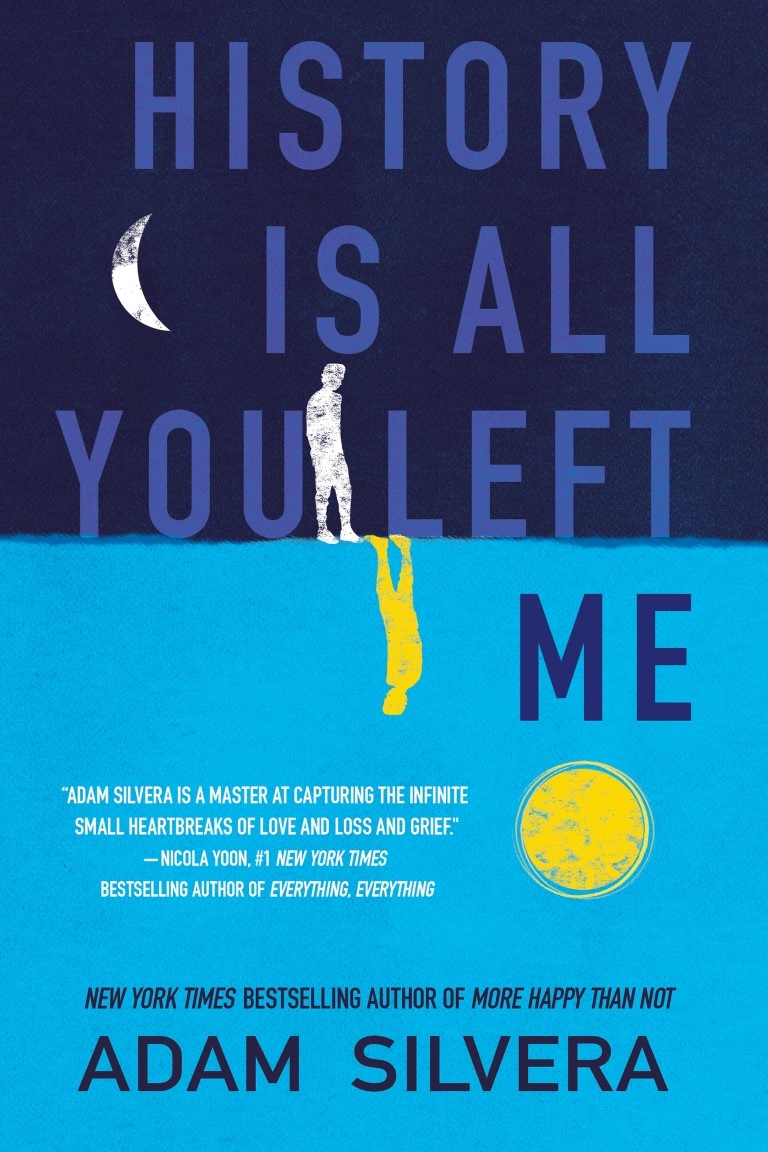 Book you're an evangelist for:
Book you're an evangelist for: 